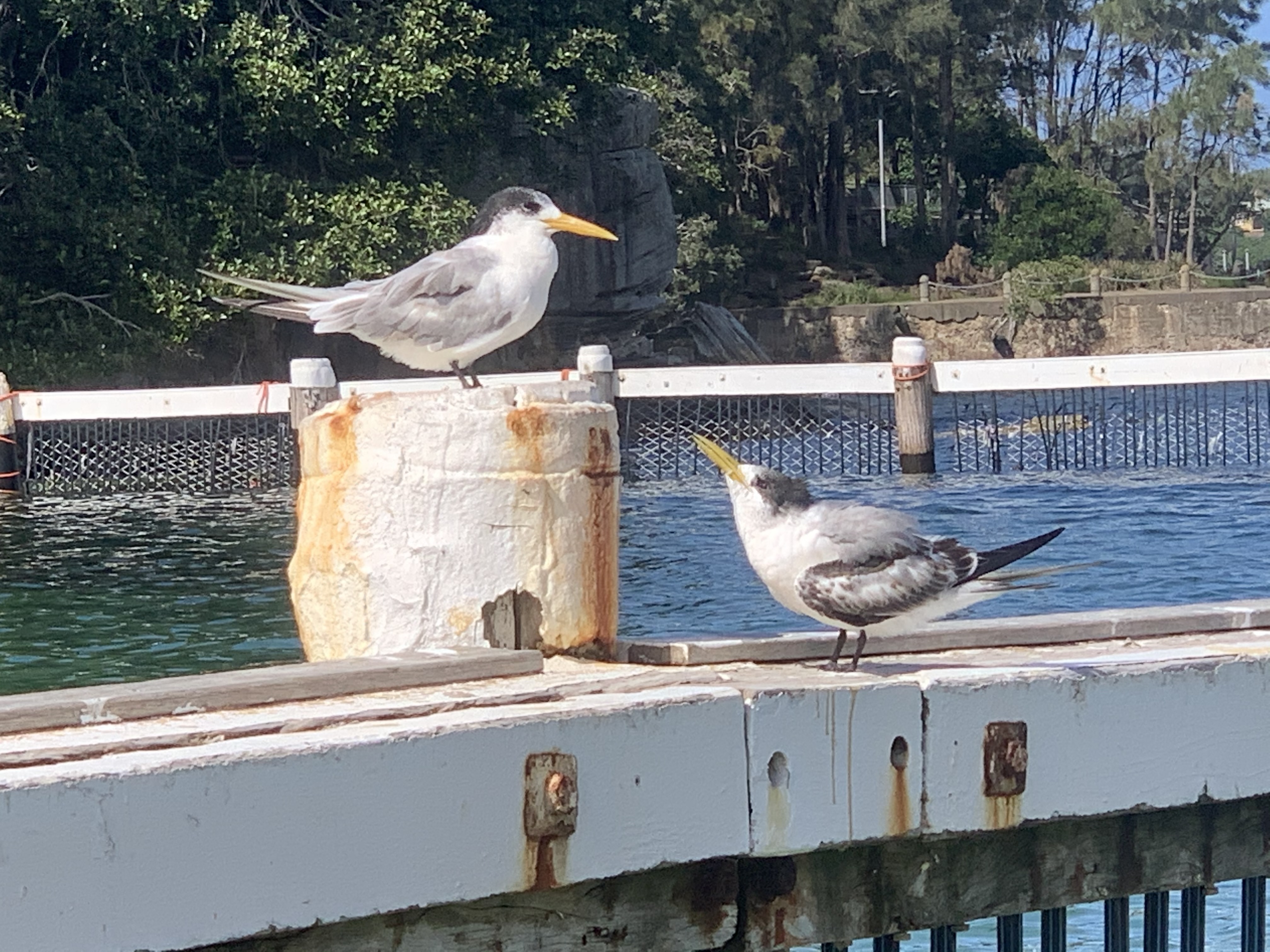
One Good Tern Deserves Another
John Martin

I’ve walked to the little beach down the road, it’s a sunny autumn day with a gentle cooling breeze from the south. I can see about 25 seagulls sitting on the sand. It’s Friday, 11am, I wouldn’t expect many people to be at the park or beach, there aren’t. I’m working from home as part of social distancing, I’ve popped down for a quick swim, the sand is warm on my feet as I walk to the water.
I can hear the water lapping as small waves wash ashore and a high-pitched chirping from a bird; I focus on the chirping and I note that it is persistent, shifting between long and short pitched begging. I look at the Silver Gulls (aka seagulls) but I can’t see any begging juveniles – indicated by their brown rather than red legs, mottled brown feathers through the wing and back feathers rather than all grey, brown beak rather than red and black eye rather than white. I look around and see 9 Crested Terns, including the begging juvenile.
Crested Terns and Silver Gulls occur around the entire 25,760 km’s of the Australian coast, yet I suspect we’re all familiar with seagulls but not terns. A likely reason for the differing awareness of these two bird species – that live side-by-side – is that seagulls have adapted to scavenge directly from people and our rubbish. Who hasn’t thrown a chip to the expectant seagulls? Terns shy away from people and continue to forage naturally; I enjoy watching them flying over the water, spotting prey and dive-bombing like a spear into the water to catch a fish. I watched the juvenile Crested Tern beg for a few minutes, another juvenile nearby joined the chorus but neither received food.
I reported the 52 birds of 11 different species I observed using the eBird app, including the observed behaviour of feeding young, so my observation adds to our global understanding of species diversity.
Dr John Martin is a career ecologist. Away from work I spend my time in the sea and the bush; you could say I seldom escape observing nature.